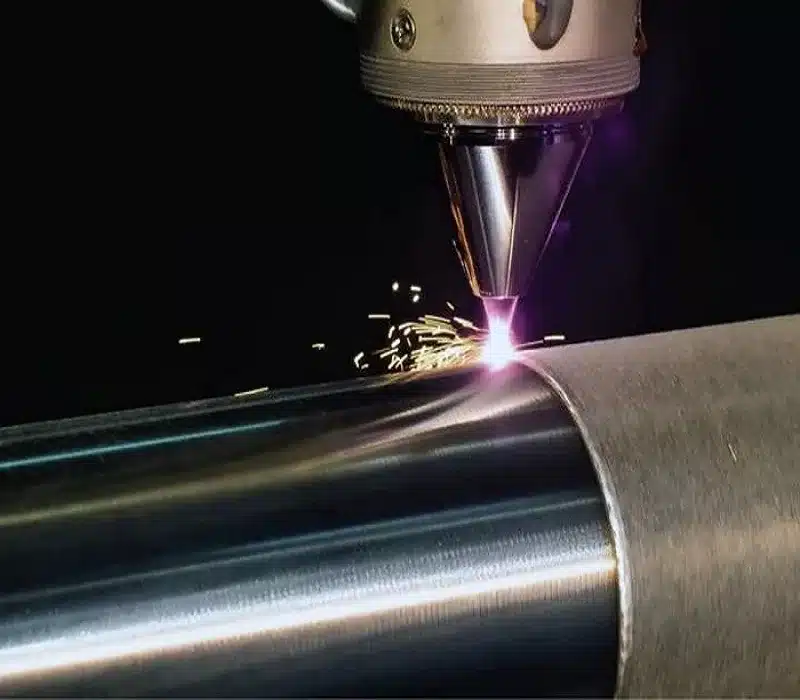Laser cladding, via synchronized or preset powder feeding, uses high-density laser beam to melt substrate and additive materials in the meantime, then, they will solidify quickly to form a metallurgical bonded coating together with the substrate. Its aim is to make substrate more resistant to wear and corrosion.
Thermal spraying is a surface treatment technology that makes use of special equipment and heat source to melt or fuse metals or non-metallic materials, then, sprays particle beams caused by droplet atomization or jetting molten particles to the prepared substrate surface at a certain speed by adopting flame flow or extra thrust, as a result, a coating with some function takes its shape in order to increase machine parts’ ability to withstand corrosion, wear and heat.
With high-density laser beam, laser cladding is more stable and reliable because it can melt the synchronized or preset feeding powder on substrate surface, and subsequently fuse the basic surface layer to form metallurgical coating. It is deemed as an eco-friendly surface treatment craft. As for thermal spraying, powder-like or filiform metals or non-metallic materials are heated by some heat source to molten or semi-melt state, after that, flame flow or compressed air is exploited to spray these to the preprocessed substrate surface. After deposition, surface coating will have a wealth of functions. But it is likely to cause pollution and substances harmful to human body. Unlike thermal spraying, laser cladding is more eco-friendly.
When it comes to thermal spraying, physical binding between coating and substrate is relatively non-ideal. The reason is that its large heat input has a great influence on the substrate, namely, deform the substrate workpiece. In addition, in view of processing property, its coating is faced with high porosity and unpleasing uniformity. Pore inclusion is regarded as a fatal defect. When small workpiece needs to be processed, thermal spraying is low in efficiency and uneconomical.
In contrast, laser cladding has prominent advantages:
- Fully-dense coating with no crack.
- Workpiece deformation is small under control thanks to little heat input and tiny heat-affected zone, requiring less subsequent processing.
- Low dilution rate, that is, alloy composition of cladding layer faces minor change when substrate materials melt into cladding layer. In this way, the cladding layer will witness superior performance.
- Take accurate control of layer thickness.
- It is easy to get fine-grained microstructures or new phase like unstable or amorphous state that can’t be obtained from equilibrium state because it cools down very quickly as part of rapid solidification process.
- Nearly no limit on powders, especially when cladding high-melting alloy on the surface of low-melting metals.
- Clad on special partition at less material consumption. It is highly cost effective.
- Long service life, above 5 times of common substrate.
In a word, workpieces will see the higher strength and quality of coating than thermal spraying, the better wear and corrosion resistance, as well as the smaller deformation after being subject to laser cladding treatment. In sectors where coating quality is relatively undemanding, thermal spraying is widely recognized, but laser cladding is still irreplaceable while repairing and dealing with some important mechanical parts in order to get wear and corrosion resistance.

